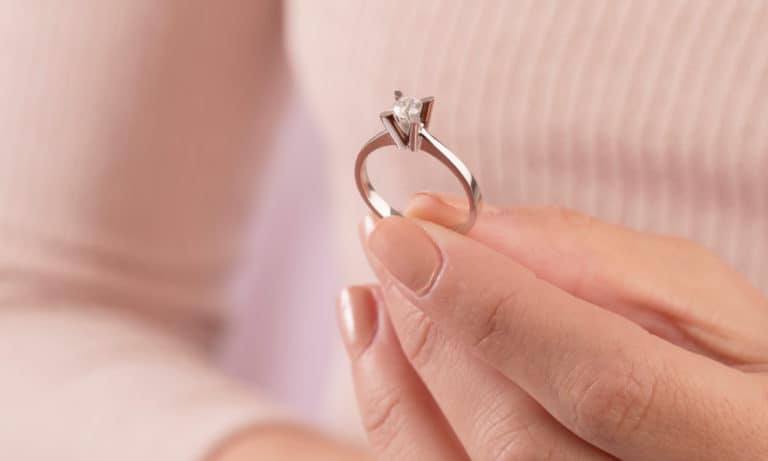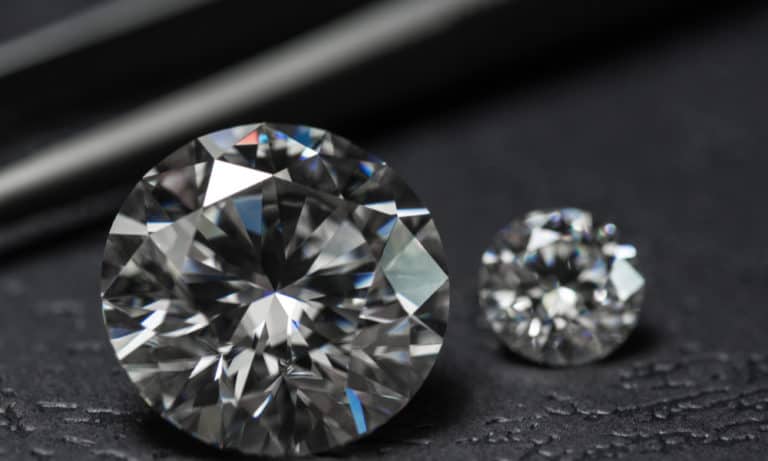
Are you looking to buy a diamond? While there are many different cuts and styles out there, some are more unique than others, making it hard to pick one among as many.
On your search, you’ve probably come across the term “Leo diamond”. These have a unique cut, but many people have different opinions on their appearance and quality.
Take a few minutes to discover more about Leo cut diamonds, their features, market value, and more.
What is a Leo diamond?
Diamond cutter Leo Schachter introduced Leo diamonds in 1993. The facets are broken into smaller sections to achieve the crushed ice effect, making the diamond visibly brighter.
It’s a patented cut that’s much different from traditional ones due to a higher number of facets. More precisely, a Leo cut diamond has 66 facets, while a standard one has 57 or 58 facets.
These are available in all kinds of shapes, including the most popular round, princess, radiant, emerald, cushion, and marquise. All of these have additional facets to provide added brightness.
A Leo diamond ring is easy to spot because of “THE LEO” inscribed in the interior. However, check carefully if there’s a small diamond replacing the “O”.
You’ll also find a laser-inscribed ID number visible under x10 magnification.
It’s also important to mention that there are two types of Leo diamonds. One is the visibly brighter diamond with maximized sparkle, fire, and brilliance.
The other is called The Leo Diamond Artisan. This one has the same lighting standards, but extra attention was paid to polish and symmetry.
The Unique Cut

Leo Schachter claims Leo diamonds are visibly brighter than other similar diamonds. The patented faceting allows the light to travel through diamonds differently, achieving excellent brilliance.
This brilliance is the light reflected by the facets often referred to as return light. The return of light can be enhanced or reduced, depending on how the facets are arranged.
But, the more light it returns, the brighter it is. According to Schachter, the brightness has been confirmed by gemology experts who inspected the return light over the years.
Color and Clarity
Leo Schachter says these are the first diamonds independently certified to be visibly brighter. And while that is true, it’s important to note that they’re not the only ones.
A Leo Diamond isn’t the brightest out there, although it may come relatively close. The cut enhanced the brightness and sparkle but also helped to mask the yellow tints.
Because it’s so bright, it doesn’t show as many internal flaws you could otherwise notice quite easily. This is especially the case with low-clarity stones, as the enhanced brightness makes a huge difference in how the diamond turns out.
Now, enhanced brilliance can affect both color and clarity in different ways, so consider what exactly you are trying to achieve.
The Science
You may not like the thought of science, but it’s important we go through that when talking about Leo diamonds. A traditional cut has 57 facets which is the ideal standard. This isn’t very easy to achieve due to the precision required.
Although more facets mean more brightness, there’s a catch. A Leo diamond has more surfaces to reflect light, but these surfaces are smaller.
The flashes are short, and you won’t be able to see the full spectrum of colors, otherwise known as fire. Sadly, Leo diamonds lack this phenomenon of colorful light.
When buying diamonds, you should look at fire, brilliance, and scintillation. Fire is the colored light, while the brilliance is the white sparkle. Scintillation is the contrast between the white and black sparkle you see when you move the diamond.
A Leo cut maximized brilliance, but nearly all the fire is lost due to it. Although Leo launched the Leo First Light Diamond with maximized fire, this one didn’t go so well.
Many people think it has a “disco-ball” appearance of diamond synthetics.
Identification and Certification
Leo diamonds are highly popular and rarely available for second-hand buying. Still, you should know how to verify its authenticity nonetheless.
The safest way is to buy the stone from an authorized distributor. It should have a certificate with an identification number, so make sure to look for that even if you’re purchasing the stone on the internet.
Its grading report contains all information about quality characteristics. As we said, a real Leo will also have a laser-inscribed ID number as additional proof of authenticity.
The ID inscribed should match the one on the certificate. And, what’s best is that you can use it to trace the diamond on Leo Schachter’s website.
These come with two grading certificates – one from GemEx Systems and either IGI or GSI. GemEx system measures the light performance, showing how bright the stone is in five different light settings.
It also grades brilliance, fire, and scintillation. Finally, the GemEx certification backs Leo’s claim these are independently certified to be visibly brighter.
GSI and IGI are generally unknown labs, and it’s unlikely you’ll see a Leo diamond with a GIA report. If there is a GIA report, it’s usually because a private jeweler sent it to be graded.
Many people argue that GSI and IGI grading reports aren’t reliable indicators of clarity and color properties.
Problems with Leo Cut Diamonds
Leo diamonds aren’t perfect, although they sure look like it. A few things are wrong with these stones, but you might not see that with the naked eye.
Inconsistent cut and finish standards make most experts second-guess the overall quality of the stone. It does look shiny and beautiful when you move it in the light, but you may notice a few flaws when looking at it more closely.
Polish and symmetry are often rated as good or very good. Whether or not this is good for you is entirely up to you, but remember that Leo diamonds aren’t cheap.
If you look at various Leo diamonds, you can sometimes notice the variations in cut and polish. There’s nearly no consistency, which is why some Leos look significantly worse, although coming from the same company.
These are branded and popular, but also expensive. And it’s for this reason that people feel like they’re overpaying, especially when you consider the polish.
Diamonds are super hard and can take on a good polish. It’s easy to achieve an excellent polish, but Leo diamonds are often rated as good. And, good might not be good enough for this price.
Is Leo Better than Others

The producers claim this is the first-ever diamond ever independently certified as visibly brighter. There’s a statement on their website where you can learn more about that.
This may be true, but take it with a grain of salt. It’s the first diamond certified, but it’s not the only one. And it’s also not the brightest.
What does this claim mean to you as a buyer? It’s hard to tell because many people feel like it’s just marketing jargon. It’s not the brightest one – it’s just the first to be certified as visibly brighter.
How much is it Worth
Leo diamonds are exclusive – we have to give them that. These are only sold at Kay Jewelers, so it’s unlikely you’ll find them in the second-hand market.
A 1 ct. round Leo Artisan diamond may cost up to $8,000, while a traditional round one from an online retailer is at around $3,000 to $4,000.
On top of being expensive, these stones have limited salability, so you might not get what you paid for them.
The value of your Leo depends on its 4 Cs:
- Cut Grade– how well it’s cut on a scale excellent to poor. Sadly, there are no official grades for a princess or emerald-cut diamonds.
- CaratWeight – how much does your diamond weigh in carats? Check the weight of all the stones on your ring, not just the largest one.
- ColorGrade – how much yellow/brown color it shows on a scale of colorless to light yellow (D to Z)?
- ClarityGrade – it shows the amount of interior and exterior marks the stones have on a scale of flawless to visibly flawed (FL to I3).
What Setting to Choose?
Choosing the right setting for your Leo stone shouldn’t be too complicated. While you can pick anything you like, it’s always best to have the stone’s characteristics in mind.
Colorless or nearly colorless diamonds are best when paired with platinum or white gold. This type of setting won’t add color reflections.
Those with a visible tint can be matched with a yellow gold setting to absorb the stone’s yellow. In this case, a white setting would make the tint stand out even more.
However, you might also want to think about durability. Platinum is the most durable option if you want your ring to last a long time. White gold isn’t as durable, although it’s cheaper.
Yellow gold looks good but is significantly soften than white gold and platinum.
Conclusion
Leo diamonds are highly popular, especially for engagement rings. In part, their popularity comes from the fact that they’re exclusively sold.
They’re beautiful, but much like other stones, they have drawbacks and flaws. It’s up to you to weigh the good and the bad before buying.
One thing is for sure – you’ll have a beautiful ring that’ll last you a long time.
To wrap up, here’s what we discussed:
- The number of facets
- Inconsistent finish and cut quality
- How to determine the worth
- Why people love it
What do you think about these points? Feel free to start a discussion in the comment section below, telling us your opinion.






